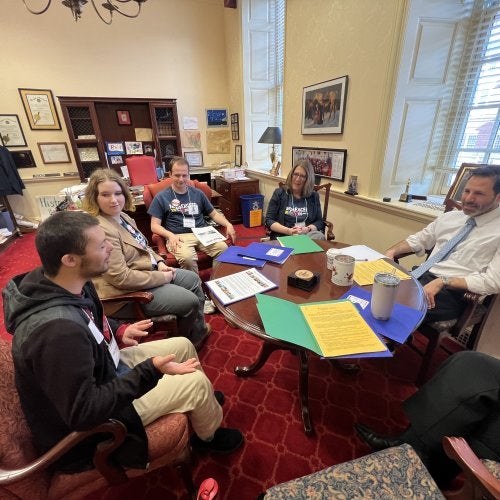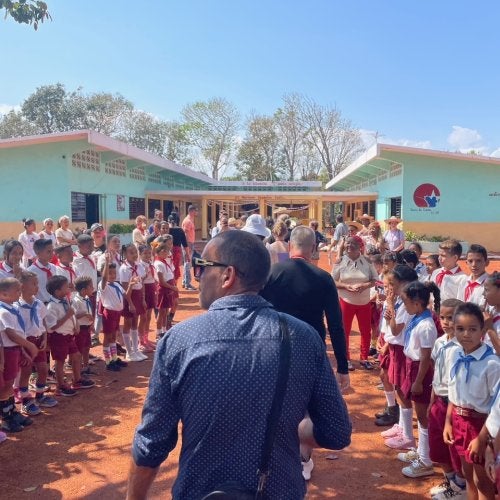

Universal Design for Learning Brings Accessibility to Early Childhood Education
Many preschool and childcare programs serve diverse groups of children. This diversity includes children from different ethnic, economic and linguistic backgrounds, as well as children with disabilities. This diversity reflects the communities from which children come and enriches the classroom, but meeting individual learning needs of each child can also present challenges. One way that early educators can meet these challenges is by applying principles from Universal Design for Learning (UDL).
UDL has its roots in the concept of Universal Design from the field of architecture. Its premise is that buildings and outdoor spaces should be designed so that they are accessible to all people (Mace, Hardie, & Place 1996). For example, entryways to buildings can have both stair and ramp access, doors can have both button access with assistive motors and manual access, and sidewalks can have curb cuts, allowing a smooth passage between the sidewalk and the street. While Universal Design was originally conceived to help people with disabilities, we know that all people can benefit from ease of access. If a person is carrying a lot of packages, they can benefit from having a button to open the door. Curb cuts make it easy for bicyclists as well as for someone pushing a stroller to go over a curb. UDL applies the Universal Design concept to the classroom environment and the curriculum with the idea that educators design both to be appropriate for a wide range of learners.
UDL is based on three principles:
Means of Representation. Children are different in how they receive and understand the information presented to them. Therefore it is important for teachers to present the information in a variety of ways including using concrete objects and pictures as well as verbal presentation.
Means of Expression. Children differ in how they respond to teachers’ questions as well as how they demonstrate what they have learned. In answering teachers’ questions, many children respond verbally, but teachers can encourage children to use gestures or point to a picture or object. In demonstrating what they have learned, some children can write about what they know while others may draw a picture to represent that learning.
Means of Engagement. In order to engage all children in planned activities and in interactions with other children and adults, it is important for teachers to focus on gaining children’s interest as well as sustaining their attention and persistence with a task. Children are interested in activities and materials that are related to their life experiences, family cultures, as well as “current popular themes, characters and toys” (Horn et al., 2016, p. 59). They also respond well to having choices as they engage in learning activities. In order to sustain children’s attention, teachers need to monitor children’s levels of engagement and ensure that tasks are neither too difficult nor too easy.
Sample Whole Group Activity Incorporating UDL: Apples can be Compared in Different Ways
The teacher is conducting a science lesson related to measurement and graphing and s/he introduces the lesson by asking the children what they know about apples while showing red, yellow and green apples of different sizes. By providing actual apples, as well as photographs of apples, the teacher uses multiple means of representation to engage all children in the activity.
Then the teacher and children make a plan about how to measure the weight and circumference of the apples. They predict which apple they’ll like the best. The teacher uses a graph to record the children’s predictions about their favorite apple. The children taste the different apples and then see if their predictions were confirmed. Multiple means of engagement are addressed directly and are used to capture their attention, curiosity and engagement in the activity.
In a follow-up small group activity, the children weigh and measure the apples. Children weigh the apples using a food scale and measure the circumference using yarn. Children use multiple means of expression as they measure the apples in different ways using different tools. Teachers record the apples’ weight and circumference on a chart, asking children which apple was the heaviest, lightest, biggest around and smallest around.
Setting Up the Classroom using UDL
When teachers set up their classrooms, they can apply elements of UDL. For example, they can use multiple means of representation in a variety of ways. In addition to print, pictures or photographs can be hung on the wall for the classroom schedule and in each small group area for guidance with housekeeping. Within each small group area, multiple means of representation can provide more information about where items belong on the shelves. In the block area, for example, the teacher can make a paper outline of each size/shape block and affix those outlines to the shelves where each type of block should be placed. If there are containers for different toys, the teacher can put a picture on that container of the toy that belongs there, and the teacher can affix one of the toys on the outside of the container as well.
Additional Resources and Professional Development Opportunities
If you are interested in learning more about UDL, or are already utilizing UDL and want to strengthen your implementation, many resources are available to provide assistance. Here are a few:
- The Early Childhood Technical Assistance Center website offers tool kits, article and book suggestions, and a list of national centers that focus on UDL and accessibility.
- The National Center on Universal Design for Learning website contains many resources to help with UDL implementation.
- The Center for Applied Special Technology provides professional development tools including online courses and in-person workshops to help educators and institutions implement UDL.
Horn, E., Kang, J., Classen, A. Butera, G., Palmer, S., Lieber, J., Friesen, A., & Mihai, A. (2016). Role of Universal Design for Learning and Differentiation in Inclusive Preschools (pp. 51-66). Environment: Promoting meaning access, participation and inclusion. (DEC Recommended Practices Monograph Series No. 2). Washington, DC: Division for Early Childhood.
Mace, R.L., Hardie, G.J., & Place, J. P. (1996). Accessible environments: Toward universal design. Raleigh: The Center for Universal Design, North Carolina State University.
The Center for Early Childhood Education and Intervention conducts high quality research on early childhood education and early intervention programs. Visit our website to learn more. You can follow us on Twitter at @CECEIatUMD.



